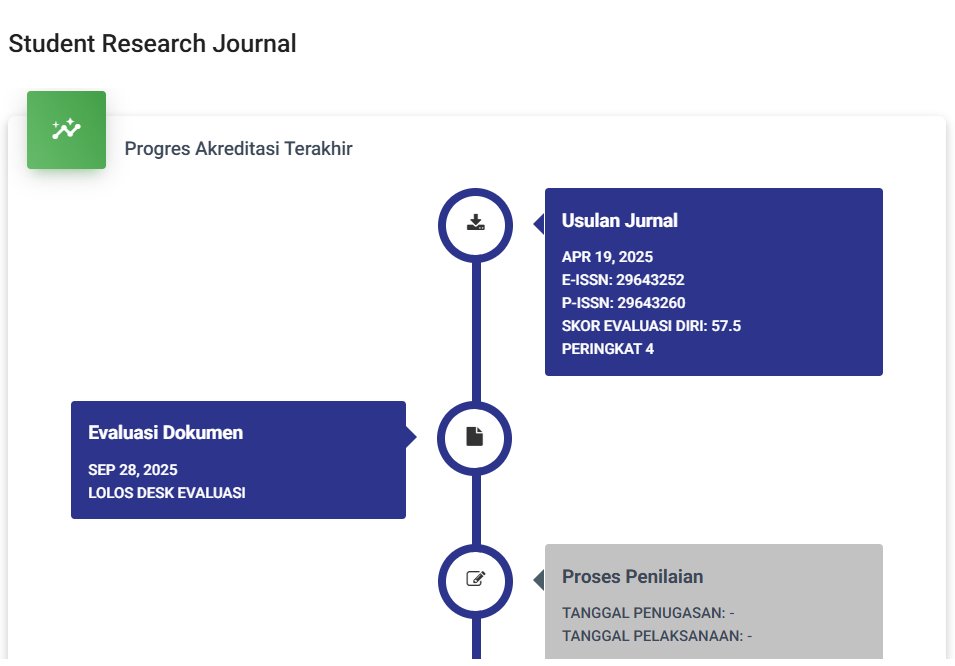Meningkatkan Kompetensi Sumber Daya Manusia Untuk Masa Yang Mendatang
DOI:
https://doi.org/10.55606/srjyappi.v1i5.705Keywords:
Competence, Organization, Human ResourcesAbstract
Human resources are the most dominant factor in an organization that is built based on needs and implementation. Effective human resource (HR) management must be considered in order to increase competitiveness in the global market and contribute to creating competence in an organization. At this time, human resource management (HR) in the future will become a major concern in the world of business and management, which is a key factor in preparing society to face challenges in the future which are increasingly complex and dynamic, so that organizational planning, implementation and control of resources is needed. human resources in the organization to achieve goals effectively and efficiently. With this, in a business world that continues to develop, it is important for organizations to understand and develop competencies so they can face the challenges and obstacles that continue to arise. Then, a future filled with technological changes, market dynamics and global challenges requires human resources (HR) who have relevant and competent skills and knowledge who are able to compete to maintain and increase the competitiveness of an organization. Success or failure depends on the ability of human resources to carry out their duties and functions. This does not only apply to workers, but in educational institutions, and in society for the future stages of their lives. Formal and informal education, lifelong learning, and access to information technology are key elements in ensuring continued competency. Apart from that, organizations and governments need to play an active role in creating an environment that supports the growth of human resource (HR) competencies. By increasing human resource competency, society can be better prepared to face future technological, economic and socio-cultural changes. The aim of this research is to provide competency development in organizations so that they are able to produce superior human resources (HR) in facing the future involving skills that are relevant to market needs. The research method used in this research is the literature study method. Where researchers study and analyze then provide appropriate descriptions in the form of competencies, organization and methods. The results obtained show that the development of appropriate organizational competencies can provide benefits such as better adaptation to changes in the innovation environment and more effectiveness, as well as achieving organizational competency excellence which requires understanding their business context and identifying the most relevant basic competency components so that they are effective in achieving goals. their strategy.
References
A, Labola, Yostan. (2019). “Konsep Pengembangan Sumber Daya Manusia Berbasis Kompetensi, Bakat dan Ketahanan dalam Organisasi”. Jurnal Manajemen & Kewirausahaan, Vol. 7. No. 1: 28-35.
Abdullah, Husaini. (2017). “Peranan Manajemen Sumber Daya Manusia dalam Organisasi”. Jurnal Warta Edisi : 51.
Aliefiani Mulya Putri, Ganis, Putri Maharani, Srirahayu & Nisrina, Ghina. (2022). “Literature View Pengorganisasian: SDM, tujuan Organisasi dan Struktur Organisasi”. Jurnal Ekonomi Manajemen Sistem Informasi, Vol. 3, No. 3.
Calilista, N. (2016). Pengaruh Kompetensi SDM Terhadap Kinerja Karyawan Pada PT.TRESNAMUDA SEJATI Cabang Surabaya. AGORA: Vol. 4, No. 2.
Darmadi. (2022). “Strategi Manajemen Sumber Daya Manusia Dalam Meningkatkan Keunggulan Kompetitif”. Equator Journal of Management and Entrepreneurship, Vol.10, No.02: 085-092.
Edy Sutrisno, Prof, Dr, H. (2009). “Manajeman Sumber Daya Manusia”, Jakarta: Kencana, 201.
Habsy, B. A. (2017). “Seni memehami penelitian kuliatatif dalam bimbingan dan konseling: studi literature”. Jurnal Konseling Andi Matappa, 1(2), 90-100.
Khotijah, Siti dan Badrussholeh, Anshori, Moh. Isa. (2023). “Kompetensi Organisasi : Studi Literature”, Jurnal of Management and Social Sciences, Vol. 1, No. 3.
Mahyadi. (2023). “ Sistem Informasi Manajemen Terhadap Kinerja Organisasi (A Literatur Review)”. Jurnal Ekonomi, Akutansi dan Manajemen, Vol. 2. No. 2: 301-3011.
Manmohan, J. (2013). Human Resource Management, USA: Bookboon
Muhammad Arif, Khairan. (2021). “Strategi membangun SDM Yang Berkompetitif, berkarakter dan unggul menghadapi Era Disrupsi”. Tahzib Al Ahlak, 4(1), 2.
Muhammad Rizqi, R., & Zulkieflimansyah. (2022). “Peran Manajemen Sumber Daya Manusia dalam Upaya Peningkatan Manajemen Pengetahuan”. Jurnal Manajemen Dan Bisnis, 5(1), 1-9.
Mulyana, M. (2010). “Manajemen Sumber Daya Manusia (Sdm) Ritel Dalam Meningkatkan Kinerja Perusahaan”. Jurnal Ilmiah Ranggagadin, Volume 10, No. 2: 164 -170.
Patonengan, Jenerson. (2021). “Pengembangan SDM melalui Peningkatan Kompetensi Pegawai Negeri Sipil pada Badan Kepegawaian dan Pengembangan SDM kabupaten Kepulauan Siau Tagulandang Biaro Provinsi Sulawesi Utara”. Jurnal Ilmu Pemerintahan Suara Khatulistiwa, Vol. 4, No. 2.
Ruhana, I. (2012). “Pengembangan Kualitas Sumber Daya Manusia VS Daya Saing Global”. Jurnal Administrasi Bisnis, Vol. 6 No. 1.
Sadili, S. (2005). Manajemen Sumber Daya Manusia, CV.PUSTAKA SETIA, Bandung.
Samsuni. (2017). “Manajemen sumber daya manusia”, Jurnal Ilmiah Keislaman dan Kemasyarakatan, Vol. XVII, No. 31.
Sugiyono, (2013). “Metode penelitian kuantitatif dan kualitatif”. Bandung: Alfabeta.
Susan, E. (2019). “Manajemen Sumber Daya Manusia”. Jurnal Manajemen Pendidikan Islam, volume. 9, No. 2.
Wibowo. (2010). Manajemen Kinerja edisi ke 3, Jakarta: Rajawali Press.
Widajanti, E. (2007). “Perencanaan Sumberdaya Manusia Yang Efektif: Strategi Mencapai Keunggulan Kompetitif”. Jurnal Ekonomi dan Kewirausahaan, Vol. 7, No. 2: 105 – 114.
Downloads
Published
How to Cite
Issue
Section
License
Copyright (c) 2023 Sela Septiana, Afifah Widiya Saputri, Nizar Azmi Fawwazillah, Riyanto Nur Wicaksono, Mochammad Isa Anshori

This work is licensed under a Creative Commons Attribution-ShareAlike 4.0 International License.








